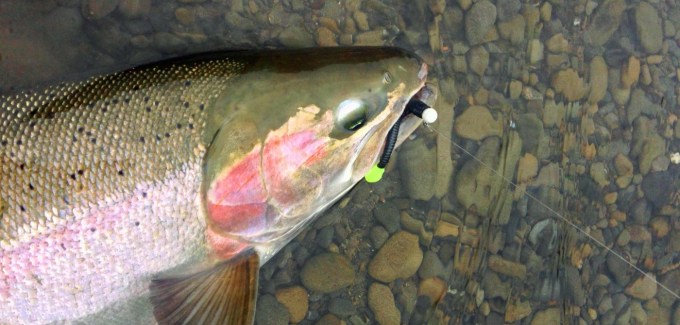
Can’t fish? Well, you might as well read about it! Since you are probably stuck at home these days, now’s a great time to catch up on your fishing techniques.
Here’s my catalog of how-to titles, available through Amazon.
The Ultimate Guide to Steelhead Bank Fishing: (263 pages, $11.99 Digital Copy)
Jam packed with all the how-to info you need become a proficient bank angler: reading the water, curing bait rigging diagrams and tons of other stuff — it’s all in here

Light Tackle Surf Perch: (52 pages, $2.99 Digital Copy)
Thanks to detailed diagrams, photos and descriptive text, you’ll learn how to identify likely looking perch hang outs like troughs, holes, rips and more. Richey also shares secrets he’s learned from commercial perch anglers and other top beach fishermen and passes them on to you so you can be successful.

Plug Fishing For River Fishing: (69 pages, $2.99 Digital Copy)
In this, the most comprehensive guide of its kind ever assembled, JD covers everything you need to know to consistently catch river salmon on wobbling plugs like FlatFish and Kwikfish.
Packed with full color photographs and diagrams, the book covers everything from the basics to sophisticated tricks used by pro guides.

Light Tackle Delta Striper Secrets: (58 pages, $2.99 Digital Copy)
In this book, JD shares the pro tips you need to catch striped bass in the Delta. Packed with photos and insightful diagrams, Richey shows you how to locate stripers, what to look for in a spot, how to work the tide to you advantage… and how to get bit using light tackle techniques like topwater, swimbaits and jigging.

Side Drifting for Steelhead: (Paperback, $14.53 Digital Copy)
In this book, JD shares everything you need to know to become a successful side-drifter. Best describe ed as a family of techniques, side-drifting includes three methods–freedrifting, side gliding, boondogging. Each method is explained in depth and includes the basic gear you’ll need.






















 Continue to let line out at a controlled rate with your thumb until you get the plug and planer where you want them. As you can see, I have the planer working here near the opposite bank of a smaller river. Once in place, you can just hang out and wait for a fish to come to you or you can slowly walk downstream, back trolling like you would from a boat.
Continue to let line out at a controlled rate with your thumb until you get the plug and planer where you want them. As you can see, I have the planer working here near the opposite bank of a smaller river. Once in place, you can just hang out and wait for a fish to come to you or you can slowly walk downstream, back trolling like you would from a boat.


